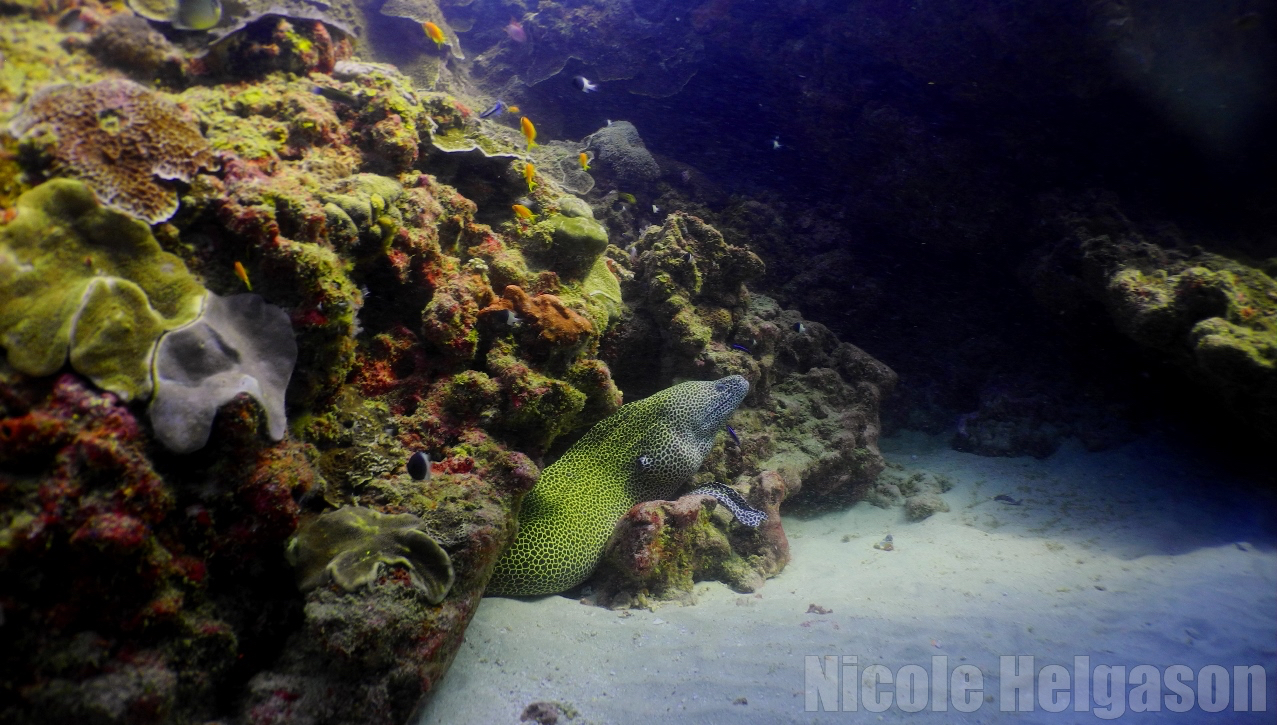The moray eel is a favorite among divers and a great subject for photography or videography. You will often find moray eels tucked away in a hole with their jaw gaping open to facilitate respiration. If you’re lucky you might even get to see a little cleaner shrimp scurrying between the morays teeth picking out his lunch.
Moray eels can be found in both tropical and temperate seas, however you will find more species living in corals reef in warmer oceans. Moray eels are common on shallow reef dives but they can actually be found living at depths of several hundred meters, well beyond the reach of recreational scuba divers.
The honeycomb moray (Gymnothorax favagineus) is a beautiful species of moray that is found in the indo-west pacific from the east coast of Africa to the Australian Great Barrier Reef. The honeycomb moray gets its name from the black honeycomb spots covering their mainly white and green bodies, and the honeycomb moray is also known as the laced moray, leopard moray or tassellate moray.
It is quite a sight to see a swimming moray, especially during the day. The honeycomb moray will leaves its lair at night to actively hunt along the reef. The moray is carnivorous and feeds mainly on small fish, octopus, cuttlefish and squid.
The moray eel can sometimes have a bad reputation as vicious underwater animal, although morays prefer to hideout and avoid human contact. This could be due to their need to keep their mouths wide open to breathe and their mouthful of sharp pointy teeth. Morays are relatively calm underwater and allow diver to come within a few feet, however it is important to give morays and all marine life space so they do not feel threatened.


